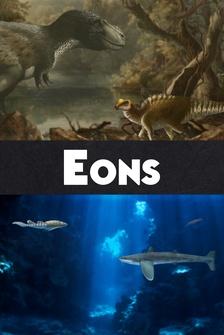Ocean acidification.
It is the lesser known side effect of our global CO2 emissions.
We put CO2 up into the atmosphere, it gets sucked up into the ocean, causing the ocean to become more acidic, creating a whole host of problems.
But there are a lot of researchers and startups working on trying to fix this problem, including some projects that work like a big bottle of Tums for the ocean.
So can this quick fix basic solution work to solve our ocean acidification woes?
No, obviously not.
But there is some really cool science here and we might actually be on the right path, or course, or heading...
I dunno what you call…track?
What do you call like a path through the ocean?
My sweater's on backwards.
That whole time.
I'm only now realizing this is, this is the front of the sweater.
Just so we're all on the same page as CO2 levels in the atmosphere rise, the ocean sucks up some of that CO2 and this is great, honestly.
The ocean sucks up about 30% of our current annual carbon emissions, which is super helpful.
In the sea water, the CO2 combines with H2O to create carbonic acid.
That then dissociates into bicarbonate ions and hydrogen ions.
The hydrogen ions cause the ocean to become more acidic, hence ocean acidification.
If this reaction is balanced, things stay stable.
But if you start dumping more and more CO2 onto the left side of the equation, increasing its concentration, you're gonna shift the equilibrium and the reaction is gonna try and relieve the stress.
It's gonna do that by making more and more carbonic acid trying to return to balance.
This response of a chemical system to stress like a change in pressure or temperature or concentration is known as Le Chatelier's principle.
Basically, as you get more and more CO2 on the left, it's more likely that it'll bump into these water molecules, react and then move the equation to the right.
In the end, that's gonna cause more hydrogen ions and a more acidic ocean.
And this can be problematic for stuff living in the ocean, particularly shellfish and corals.
They rely on carbonate ions in the water to build their shells, but the hydrogen ions react with the carbonate to form even more bicarbonate reducing the amount of available carbonate for organisms to build their shells.
Average ocean surface pH has declined by about 0.1 units since pre-industrial times, which works out to about 16% decrease in available carbonate ions.
But the main problem with ocean acidification isn't the shellfish or even the impact on industries and communities that depend on shellfish to survive.
We don't care about the shellfish.
I mean I do, I do, but...
The bigger problem is that the increased acidity also reduces the ocean's ability to take more carbon dioxide out of the atmosphere.
You have more hydrogen ions over here, so the reaction wants to relieve this and get back to balance by pushing things out towards this section and you get more CO2 and H2O out.
And it would be really helpful if the ocean could keep absorbing more CO2 since there's already way too much up there and we are still cranking out more.
Stopping our carbon dioxide emissions would be the actual solution.
But honestly, we have raised CO2 levels so much that even if we did stop, we would still need to pull carbon outta the atmosphere to try and mitigate the negative impacts that climate change is already having.
This is all kind of a bandaid, but it is a bandaid that we really need to work.
Reversing this acidification by alkalizing the ocean could help the shellfish, reinvigorate the carbon dioxide absorption ability of the ocean and slow down the rising global temperature.
So let's just raise that pH right.
Well, what we're talking about here is sometimes considered geoengineering.
Geoengineering is the deliberate, large-scale intervention in the Earth's natural systems to counteract climate change.
One of the most common types that people think of is solar radiation management, basically taking big shields or aerosolized particles to bounce the sun's energy away from us.
There are really people thinking about trying that.
Now the idea is that we've messed up the balance of the planet, so let's engineer it back.
And as you can imagine, this is controversial.
Proponents note that even if we stopped all CO2 emissions today, we have already changed the environment so much that effects would persist for years and years.
In fact, we've put about 420 parts per million of CO2 and other greenhouse gases into the atmosphere already, resulting in a full degree Celsius of warming, which is already having effects on our planet.
So we really need to do something to help set the ecosystem back.
But critics point out that we clearly don't have a great track record of impacting our planet's climate and our efforts to fix it.
That could be things like bouncing the sun's rays into outer space, could have unintended consequences, things like, ecological disasters, weather patterns that destroy the climate or economy of different parts of the world, the movie "Snowpiercer," et cetera.
Actually really love "Snowpiercer."
I don't wanna love it, but it was cool.
Ocean alkalinization is in some ways geoengineering, its overall goal is to use the ocean's ability to store carbon, to draw carbon outta the atmosphere.
So it is a form of carbon removal, but we're also modifying the state of the ocean in the process, engineering that ocean.
So I call it semantics.
If we wanna geoengineer our way to a less acidic ocean, why not start with Tums?
Tums are mostly calcium carbonate.
So what's gonna happen is that calcium carbonate is gonna react with the hydrogen ions that is gonna in turn form HCO3, more of that bicarbonate as well as calcium.
It's gonna leave that calcium behind.
Now, we don't really care about this.
What we care about is the fact that this bicarbonate is now going to increase in concentration and we're gonna push this reaction back this way.
The reaction's gonna try and relieve stress.
By now, creating more of that carbonic acid and then more of the CO2 and H2O.
So this calcium carbonate is gonna reduce that hydrogen ion concentration and also push this reaction back this way.
Can you have a singular Tum?
Take a Tum.
I think I, I think I think of it as Tums, a Tums.
But the CO2 byproduct from calcium carbonate isn't ideal here.
So some researchers are trying it with lime instead.
Lime is mostly calcium hydroxide, Ca 2.
It's commonly used in both cement and corn tortilla production and it is really great at neutralizing acidic solutions.
These hydroxide ions can react with the hydrogen ions creating water, pushing the pH up because we're reducing the concentration of these hydrogen ions or allowing us to pull more CO2 out of the atmosphere this way.
Early tests look like they are in fact reducing the acidity in areas near releases of lime.
For example, one trial in an estuary saw a decrease in dissolved CO2 of 70 parts per million, which is a surprisingly significant amount.
Proponents admit that we'd really have to target areas in the ocean like this where the alkalinity experiments would have the greatest effects.
They also note that it matters how the air and ocean water interact.
If your alchemized water circulates away from the surface too fast, it won't have time to re-equilibrate with the air above it and actually take that CO2 outta the air.
And that exchange time can vary based on location from days to months.
But there are some big buts here, both with ocean liming in particular and with ocean alkalinity enhancement in general.
So first, for liming, where are we getting all that lime?
Lime comes from limestone.
You first have to mine the limestone, which gives off CO2 and then usually heat it to get lime, which then also gives off CO2.
One estimate suggests that it would take 1.4 to 1.7 tons of limestone to sequester one ton of CO2.
And turning that amount of limestone into lime could give off about one ton of CO2.
Now, that CO2 would be produced in a controlled manner and could ideally be directly captured and sequestered, but we would need a whole system in place for that too.
We would need green energy, carbon capture, and a whole lot of money to make it work.
The other thing here that became clear as I read all of these papers and that I think is really important to understand is that all of these estimates and analyses have huge numbers of variables.
Things like where exactly is the lime coming from?
Do you need to increase mining operations to get it?
How are you shipping it to the ocean?
Have you thought at all about the environmental pollution problems near the mines?
What about any ecological effects to the surrounding aquatic life?
When you dump in a bunch of lime.
What if your solution actually makes the calcium carbonate spontaneously precipitate out and then you release even more CO2?
There's also worries about something called termination shock, which is a potential rebound back to acidic conditions if you stop alkalizing the area.
And have you factored all of this into your net carbon calculations for your proposal?
Creating a lifetime assessment of your solution.
Here's the thing, this isn't to say that any of these are deal breakers, it is just a lot to consider and good researchers are considering all of it.
And that's why a different analysis, which looked at what it would take to continuously alkalize the ocean for the next 380 years, putting us at the nice even year of 2400, came up with a cost estimate between one and several trillion dollars USD each year.
The difference between one and several isn't large, but the difference between 1 trillion and 2 trillion is gigantic.
So these estimates have huge ranges in terms of cost, energy needs, and CO2 output.
So there's another method of ocean alkalization that's getting some press and investment money, electrolysis.
Seawater, a couple of electrified plates.
Honestly, it is not that much more complicated.
Oh, yeah.
Oh, my gosh, it's working.
That's so cool.
I love when science works.
Thing is, you would need a lot of these plants to really make a difference.
One of these startups is planning the launch of a commercial plant in the next year that aims to pull the equivalent of the annual carbon emissions of 25,000 individuals out a year.
And that's great, but it is 0.0003% of the world's population.
And just like the liming, the energy to actually do the electrolysis would have to come from a green or renewable source to make sure that it wasn't producing more CO2 than it was removing.
And I know that I am being a huge downer here because we all want these solutions to just work.
It would be really helpful if these plants just snapped on and they solved all the issues we're having and certainly, there are lots of people investing in them through grants and VC money and carbon credits to try and get them there.
Yeah, did that last one perk your ears up?
Many of the startups in this space are selling carbon credits based on their technology.
You give them X amount of money and they'll pull Y amount of carbon out of the air, so that your airplane or whatever can put Y amount of carbon back into the atmosphere.
But you can slap a carbon neutral sticker on it.
And some of these companies are selling carbon credits out into the future based on what they expect to be able to do down the line.
So your next five years of carbon emissions are covered.
And what if those startups which are notorious for folding and whose technology isn't fully proven yet, fold before those five years are up and all the carbon is actually pulled out?
No one's gonna come and take your sticker away.
At least that's what a skeptic might say.
But despite all of the giant caveats I have just mentioned, I am actually optimistic.
It is a fatal flaw of mine.
These are big complicated problems and the best actual solution to these problems would be to stop emitting so much CO2.
So keep that in mind.
But there are lots of smart, motivated people working on this and on reducing the amount of CO2 we put into the air because if we don't reduce that, this really won't help that much.
If I dump 45 ping pong balls a year into the ocean, but only pull up five, still gonna be a lot of ping pong balls floating out there.
And like all climate change problems, there's not just gonna be one solution.
We're gonna need a lot of different solutions in different areas to get to carbon neutral or carbon negative territory.
And even very skeptical technical analysis have some optimism.
OAE shows promise as a potential CDR solution and pilot projects and research activities have begun to demonstrate its feasibility in relevant environments.
Continued collaboration among scientists, engineers, and policy makers will be crucial in optimizing these technologies.
But that involves confronting the issues and drawbacks head-on, funding to do more research, increasing our testing sites and finding interesting scientific and chemical solutions to the problems, not hiding from those issues.
That is science.
Happy Earth Month, everybody.
All this month PBS is gonna be dropping new episodes about our incredible amazing planet, including an episode of "Space Time" that talks about how viewing.















